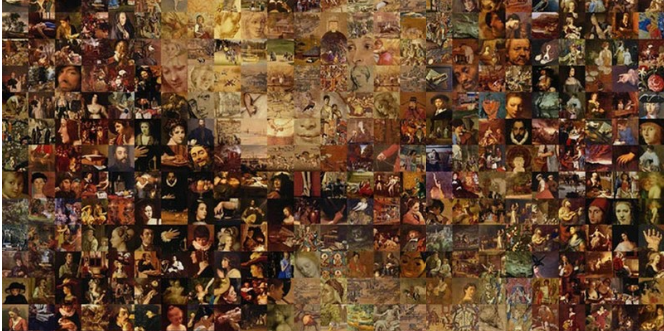A Messianic Mosaic

Have you ever seen a photomosaic? Above is a segment of a famous one by an artist named Robert Silvers, created in 2002. You can actually purchase this particular piece of art for $20,000 from a famous art gallery in Toronto. When you zoom into a photomosaic, it’s hard to tell what you’re seeing. It’s a collection of various images that seem random and chaotic. It might even seem like the artist has no design in what he’s doing.
But if you zoom out, you can see the whole picture. In this particular case, it’s a reimagining of Leonardo da Vinci’s Mona Lisa. The big picture was created by positioning hundreds of snapshots in just the right place.
But photomosaics are more than an interesting type of modern art. They’re also a great analogy to make sense of the book of Zechariah, the Old Testament’s penultimate prophet.
Zechariah was written in 520 B.C. as many Jews were returning from their Babylonian exile and rebuilding the temple. While Haggai prophesied about the rebuilding of the temple, Zechariah wants God’s people to know that their hopes and dreams will NOT be fulfilled when the temple is complete. They’re going to have to wait.
But what are they waiting for? Or rather, WHO are they waiting for? That’s the question that the book of Zechariah answers.
Zechariah is unique for a couple of reasons. It’s the longest of the Minor Prophets. At fourteen chapters it’s significantly longer than most of the others. It’s also one of the most confusing of the Minor Prophets. In a way, reading Zechariah is like zooming in on a photomosaic. It features bizarre visions, non-linear sermons, and a confusing structure.
But despite all that is confusing, scholars agree one thing: Zechariah talks more about the coming Messiah than any other of the Minor Prophets. It is quoted more often in the NT than any other OT book except Isaiah. The NT references Zechariah as many as 71 times, leading the Reformer Martin Luther to label Zechariah as “the quintessence of the prophets”[1] Another Bible teacher went even further, calling Zechariah “the most Messianic of the Old Testament books.”[2]
Some say there’s as many as 40 images of Jesus the Messiah in this little book. If we review them line by line it might seem random and chaotic. But if we zoom out we can see a breathtaking image of the One God’s people were waiting for. Consider the following snapshots of the Messiah featured in Zechariah:
- He is truly God (2:10-11)
- He is truly man, a descendent from David’s line (2:8)
- He is a priest and a king (6:12-13)
- He will be celebrated as he enters Jerusalem riding a donkey (9:9)
- He will be betrayed and valued at thirty pieces of silver (11:12-13)
- He will be abandoned (13:7)
- He will be pierced (12:10)
- He will die to give His people righteousness (3:3-9, 12:10-13:1)
- He will rise to give His people life (12:11)
- He will return to make all things new (14:4-9)
Together these images give us a beautiful Messianic Mosaic, a picture of the Messiah that is ultimately fulfilled in none other than Christ Himself. Soli Deo Gloria!




.png)